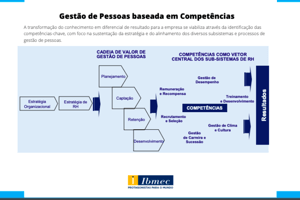Podcast
Questions and Answers
What is one of the challenges in implementing Competency-based Management (CBM) related to organizational culture?
What is one of the challenges in implementing Competency-based Management (CBM) related to organizational culture?
- Shifting the organizational culture (correct)
- Developing a competency framework
- Creating training programs
- Identifying high-potential employees
Which aspect of CBM implementation involves ensuring compliance with external norms and legislation?
Which aspect of CBM implementation involves ensuring compliance with external norms and legislation?
- Workforce planning
- Cultural aspects (correct)
- Performance management
- Career progression and succession planning
What is a key requirement for implementing Competency-based Management according to the text?
What is a key requirement for implementing Competency-based Management according to the text?
- Developing tools and methods (correct)
- Shifting organizational culture
- Creating training and development programs
- Understanding external norms and legislation
Why is developing a competency framework considered a challenge in implementing CBM?
Why is developing a competency framework considered a challenge in implementing CBM?
In what way does CBM enhance decision-making according to the text?
In what way does CBM enhance decision-making according to the text?
What is the primary focus of Competency-Based Management (CBM) in organizations?
What is the primary focus of Competency-Based Management (CBM) in organizations?
How does CBM benefit decision-making in organizations?
How does CBM benefit decision-making in organizations?
What components are included in the key competencies identified by CBM?
What components are included in the key competencies identified by CBM?
How does CBM impact the hiring process in organizations?
How does CBM impact the hiring process in organizations?
In decision-making, what does CBM suggest analyzing to identify training needs and weaknesses in teams?
In decision-making, what does CBM suggest analyzing to identify training needs and weaknesses in teams?
Study Notes
Competency-Based Decision Making in Organizations
Competency-based management (CBM) shifts the focus from traditional management practices to identifying and nurturing the core competencies that drive performance and success in employees. By understanding these core competencies, managers can make more informed and strategic decisions, leading to better organizational outcomes.
The Core of Competency-Based Decision Making
CBM identifies the key competencies, skills, and behaviors that differentiate top performers from average or low-performing employees. These competencies include knowledge, abilities, skills, personal characteristics, and behaviors that are linked to organizational objectives and are key to producing results.
CBM advocates for a data-driven approach to decision making. By analyzing competency profiles and performance data, managers can identify strengths and weaknesses in their teams, determine training and development needs, and make informed decisions about hiring, promotion, and succession planning.
Decision-Making Areas Impacted by CBM
CBM can be applied in various areas of decision making within an organization. Some of these areas include:
-
Hiring and Selection: By defining competencies for each role, managers can create a structured interview process that assesses candidates' competencies, resulting in a fair and bias-free selection process.
-
Training and Development: CBM can guide the creation of training and development programs that are tailored to specific competencies and individual needs.
-
Career Progression and Succession Planning: By tracking employees' competencies, managers can identify high-potential employees who are ready for promotion or who would benefit from additional training.
-
Performance Management: CBM provides a framework for assessing employees' performance based on their competency strengths and weaknesses, allowing managers to provide constructive feedback and set achievable goals.
-
Workforce Planning: By analyzing competency data, managers can identify skills gaps and make informed decisions about workforce development and staffing.
Challenges in Implementing CBM
The implementation of CBM is not without its challenges. Some of these challenges include:
-
Cultural Aspects: Adopting CBM requires a shift in the organizational culture, which can be challenging, especially in traditional or hierarchical organizations.
-
Tools and Methods: CBM requires complex and well-defined tools and methods, which can be difficult to implement and understand.
-
External Norms and Legislation: CBM must be compliant with external norms and legislation, which can create additional challenges, especially in industries with stringent regulatory requirements.
-
Competency Framework Development: Developing a comprehensive and valid competency framework can be complex and time-consuming, requiring input from various stakeholders and experts.
Conclusion
Competency-based decision making is a powerful tool for improving organizational performance and employee capability. By focusing on the competencies that drive success, managers can make more informed and strategic decisions, leading to better outcomes for their organizations and employees. While the implementation of CBM presents challenges, these challenges can be overcome with a well-planned and structured approach.
Studying That Suits You
Use AI to generate personalized quizzes and flashcards to suit your learning preferences.
Description
Explore the principles of Competency-Based Management (CBM) and how it enhances decision-making in organizations by focusing on core competencies that drive performance and success in employees. Learn about the impact of CBM on areas like hiring, training, career progression, performance management, and workforce planning, along with challenges in its implementation.




